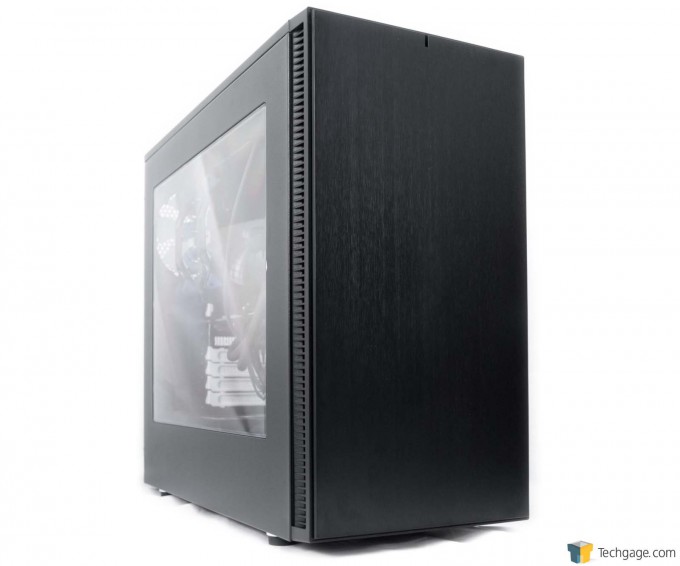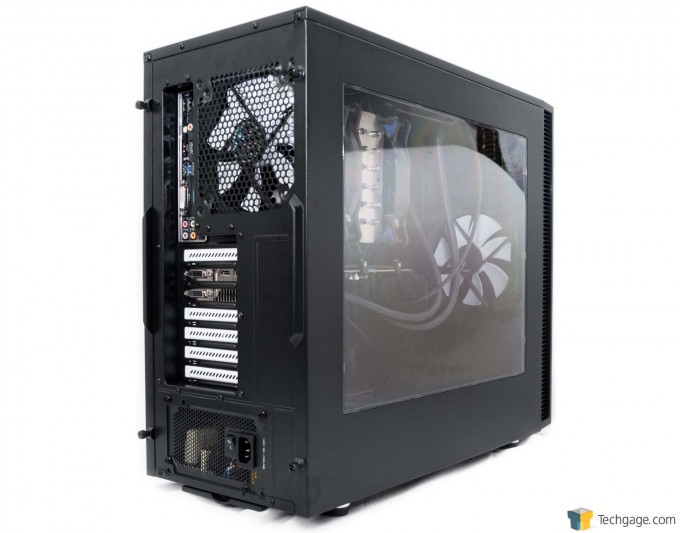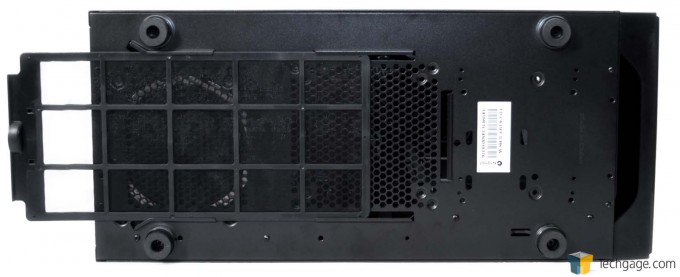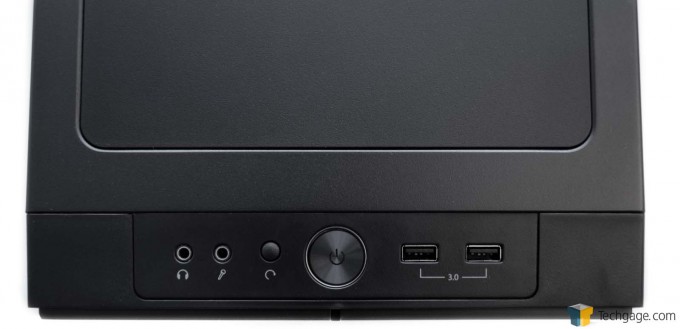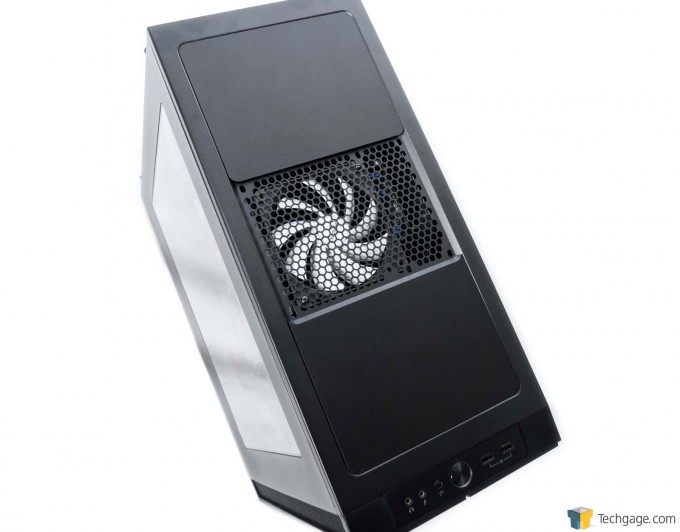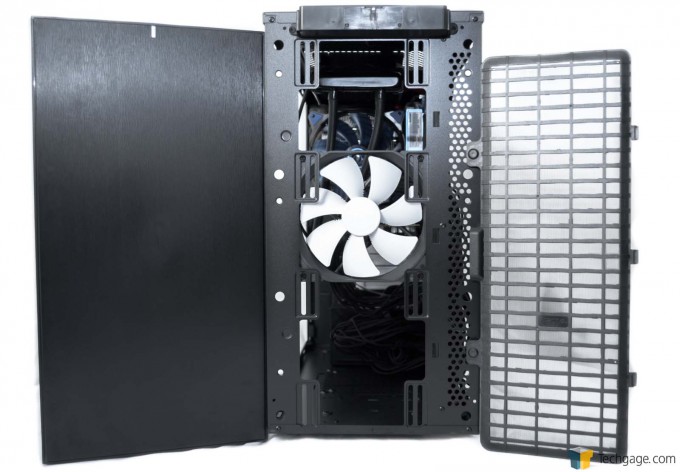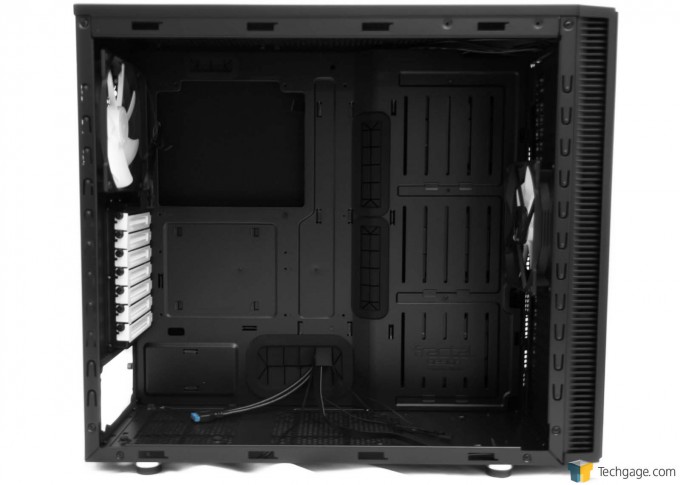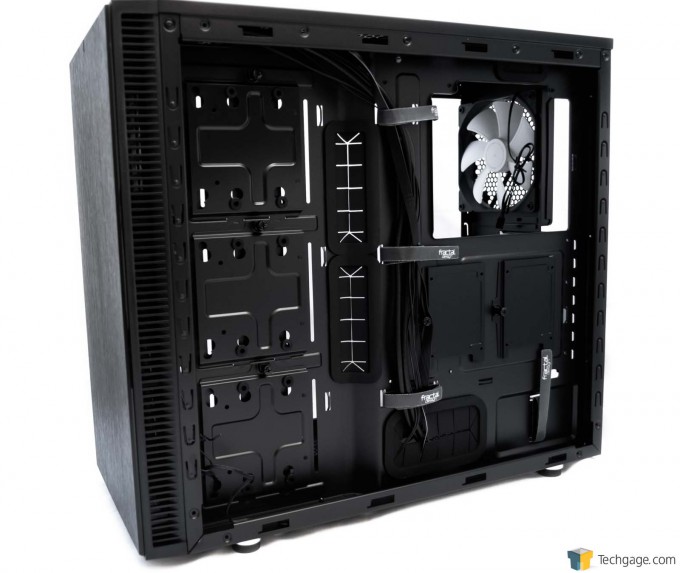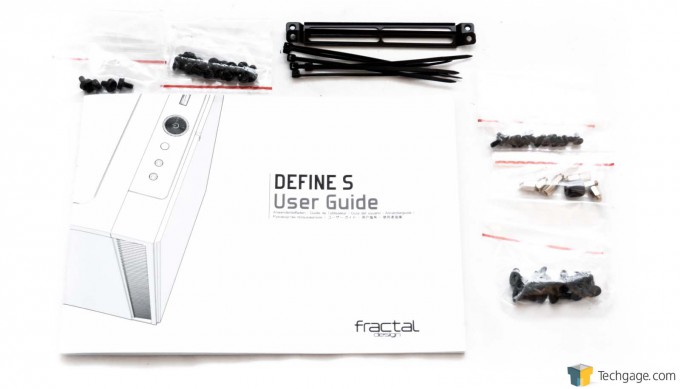- Qualcomm Launches Snapdragon 4 Gen 2 Mobile Platform
- AMD Launches Ryzen PRO 7000 Series Mobile & Desktop Platform
- Intel Launches Sleek Single-Slot Arc Pro A60 Workstation Graphics Card
- NVIDIA Announces Latest Ada Lovelace Additions: GeForce RTX 4060 Ti & RTX 4060
- Maxon Redshift With AMD Radeon GPU Rendering Support Now Available
The PC Chassis Evolved – A Review Of The Fractal Design Define S
It’s not often when we get to see PC chassis designs evolve. Generally speaking, they’re all pretty much the same, sharing all of the same features. So when we get something like the Fractal Design Define S, which boasts a feature no other chassis does, we sit up and pay attention. Join us as we take one on a Techgage test drive.
Page 1 – Introduction
Technology is in a constant state of evolution. What’s avant-garde today becomes yesterday’s news real quickly, often just a few months down the line.
We definitely see this phenomenon in the world of PCs. The thing is, not everything evolves at breakneck speed. Some types of components – CPUs and GPUs, for example – evolve relatively quickly, improving upon the previous generation every couple of years. Others, though, evolve in drips and drabs.
PC chassis have one of the gentler rates of evolution among components. Therefore, when a design introduces a feature hitherto unseen in previous chassis, it tends to grab me hard and makes me sit up and notice.
Let’s have a look at it, shall we?
This front 3/4 view doesn’t really look all that unusual. The Define S has that typical Fractal Design aesthetic: Sleek, clean, modern. There’s nothing garish about its looks at all. Dominating things in this view are the window in the side panel and the huge expanse of the chassis front dressed up with a solid sheet of brushed aluminum. Slats arrayed on the sides of the front bezel allow air to enter the chassis.
The rear 3/4 view is also fairly conventional. Noteworthy are the seven PCI expansion slots (with the covers picked out in white) and the 140mm rear exhaust fan (with its white blades).
Flipping the Define S on its side, we can have a look at the bottom of the chassis. Again, pretty conventional here. The dust filter slides out, making cleaning it easy as can be.
Moving back to the front of the chassis, this shot shows the I/O area which is positioned on the top edge of the front bezel. Sitting dead-center is the large power button; to its left are reset switch, the mic-in and the headphone-out jacks. To the power button’s right are a pair of USB 3.0 ports. The presentation is very clean.
Behind the I/O ports are a trio of panels which cover fan mounts and vents on the roof. Fractal Design calls these panels ModuVents; they clip and hook onto the roof section. The ModuVent panels can be removed for improved system cooling, or if you want to mount a radiator on the chassis roof.
So far the Define S hasn’t really shown anything particularly innovative.
The next photo might give up the game, though.
This shot shows off what lurks behind the front bezel. You can see the front air filter on the right; it attaches to the chassis via clips on one side and magnets on the other side. On the left of the photo is the front bezel.
But have you noticed what’s not part of the Define S that is in every other chassis on the market?
Yep, the Define S does not have any 5.25″ drive bays.
The deletion of this hitherto universal feature puts this Fractal Design chassis at the vanguard of just what might be the next big evolution of PC chassis design. It’s easy to see the design’s rationale: The use of optical drives is declining, so the company decided to just eschew the optical drive bays altogether. Things that used to be delivered through physical discs are now brought to consumers via the cloud. Even games are delivered via Steam or Origin.
So what happens when you take out optical drive bays from a chassis?
You free up a ton of space. The Define S consequently can fit several radiators in what is essentially a run-of-the-mill ATX mid-tower. Radiators as big as 360mm (of any thickness) will fit up front, while rads as long as 420mm will fit up top. Note, though, there is a 55mm limit for radiator thickness + fan thickness combined for a roof-mounted radiator set-up. The rear exhaust position can fit either a 140mm or a 120mm radiator, while the floor can fit a 120mm unit. It’s theoretically possible, actually, to put radiators in all of these positions, which is just amazing.
It’s obvious that Fractal Design made the Define S super-friendly for water-cooling. It’s not just the plethora of available radiator mounting options; you can mount just about any type of reservoir with a couple of provided mounting brackets, and you can also mount a D5- or DDC-type water pump on the floor as well.
As far as motherboard compatibility goes, the Define S accommodates motherboards as big as ATX-spec.
Notice that there aren’t any storage drive cages on this side of the motherboard tray. So where does one install storage drives in the Define S?
You can install up to three 3.5″ HDDs (or 2.5″ drives) on the front drive mounts. There is also a pair of additional mounts specifically for 2.5″ SSDs under the gaping CPU cooler cut-out on the backside of the motherboard tray.
The last stop of our visual tour is a look at the accessories package of the Define S. Included are the various screws and bolts needed for your PC build, several nylon zip ties, a pair of reservoir mounting brackets, and an excellent multilingual user guide.
Now that we’ve had a look at it, let’s see how well the Define S performs.
Support our efforts! With ad revenue at an all-time low for written websites, we're relying more than ever on reader support to help us continue putting so much effort into this type of content. You can support us by becoming a Patron, or by using our Amazon shopping affiliate links listed through our articles. Thanks for your support!




